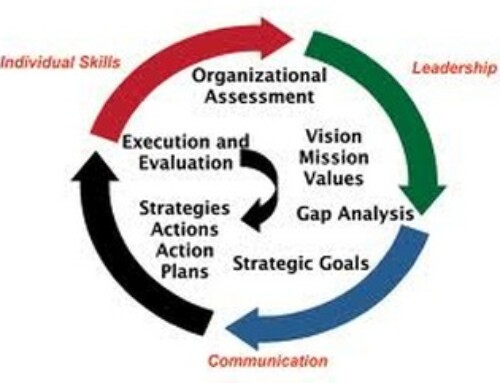Advise to REALTORS – Budget your online advertising first and make it 50% of your total marketing budget.
Advertising in newspapers is overly expensive, few people under 50 use them, and many who do are just a little out of it.
Professionals today are reading their Blackberries iPhones and iPads every waking hour of the day and consuming news in real time, shopping for summer homes, and waiting for business opportunities to ping them from somewhere.
Print does not attract people who want to own a fine watch, let alone a half dozen of them – sitting in an automatic Swiss winder in their walk-in closet. By the time a newspaper makes it to the desk or door of today’s business person, the news in the paper is already beginning to rot on the page.
What does this mean for real estate? If your leading marketing tool is newspaper advertising, you’re setting fire to money and missing the consumer.
Are we being a little harsh on this venerable (read: antique) information source? We don’t think so. This obsolete technology sucks millions of dollars away from more cost-effective marketing tools, while delivering less every year. There are better uses for your budget, especially if you market goods and services to people who don’t remember the Truman Administration.
Way back in the 20th Century…
The answer to “What homes for sale?” used to be “check the newspaper.” Newspapers were the distributors of up to date local and national information. Not anymore! The only ones who continue to read them are people who fell into the habit years and years ago. Today, if you want news, you go to 3 or 4 websites. Want a job, go to monster.com or careers.com. Want housing or a date, or a job, or just about anything – go to craigslist.com
Not only is the information faster to get, but it is fresher – updated every 3 seconds.
Pull the stakeholders in your business together. Define your brand image. Define your service offering. Then discuss the best way to tell that story. Think in terms of building a brand that will be on the lips of anyone even thinking about real estate in your area. Make sure they can articulate the difference between your brokerage and the one next door.
Tell that story everywhere your customer is – magazines, search engine rankings, your website, other real estate websites, chamber of commerce sites, school websites. If you do not already know where people go in your community – survey your customers – they will be happy to tell you.
Once you know – make your brand bounce, and deliver information precisely tailored to those prospects, with as much drill-down information as they desire… Pictures….Video…Podcasts, Videocasts…Even pages of housing specs if prospects need them. Give them everything you got and constantly seek more and more information for them.
Note carefully: we said “prospects” two times in that last paragraph, and not by chance. In branding, we pay less attention to your customers. Customers’ attitudes toward you are contaminated by reality; real estate service performance will dictate repeat purchases. The bigger lever to your growth is to create a powerful brand, to influence positively the collective perception of your best prospects – your next new customer who is out there looking for someone to help them – NOW.
Given that, why would you want to spend a king’s ransom on newspaper display ads? Those rectangles of static, limited information will be … this is where your investment gets monumentally unproductive … surrounded by every competitor you have. You’ve spent good money just to set off a round of comparison-shopping phone calls. If you’re the one called first, you can’t close the sale; if you’re called second or third, you have to be the low-price spread. It’s a lose-lose situation. You may even be ignored totally if the prospect focuses on your competitor and never sees you. Newspapers are a “put 5 dollars in, get one dollar out” crapshoot.
Bet you know all of these brands….
Microsoft, IBM, GE, Intel, Nokia, Disney, CitiBank, Fisher-Price, Hewlett-Packard, American Express, Gillette, Louis Vuitton, Cisco, Samsung, ……. Now pick up the newspaper and try to find them there. Hummmmm – those are the top brands in the world. You know them because they touch you everyday, but their brand message is highly focused to provide the highest impact precisely at the time you are considering their products – targeted placement everywhere. These large company spend as much as 20% of their ad budget testing return on investment of their ads.
The real estate industry is simply addicted to newspaper advertising and is in a state of fear and denial – fear of withdrawal is what keeps the Newspapers on life support.
All the smoke-and-mirror fear tactics of “combined rates” and “volume discounts” and implied threats to banish you to a “bad position” if you reduce the size of your ads miss the point: they are all bad positions – overpriced, underperforming, and outdated.
Join the revolution: you should keep a few simple lines for older people who still read the paper, trust me, they will read the whole paper and find your listings. Quit display ads cold turkey. Start now, because it will take 12 to 18 months to recapture and redeploy those budgets.
Consider anyone who says “oh, our company has always used the Newspapers” as a person failing to adapt to changing times. That’s understandable, actually, because none of this would have been true ten years ago. Even five years ago, before high-speed connectivity got so widespread, it was not a slam dunk. Many of the clients we speak to admit their newspaper results are in year-to-year decline, but they persist out of fear.
Are there exceptions? Of course.
If you’re marketing to the elderly or to the poor, the newspaper might be cost-effective – might be – because they are not using their own computer (they use a family or friend’s computer).
One thing is fairly straightforward and immediate: if you’re spending more than the very minimum on the newspaper, it’s time to kick the habit.
But don’t take our word for it. If you’re afraid to “jump ship” completely from newspapers, there are methods to help you quantify and justify your decision. A company called ifByPhone has developed a technology which allows you to track responses from print ads, magazine ads, yard signs, real estate TV shows and any other offline medium you may be using. From the data gathered by this technology you will be able to tell exactly where your leads are coming from. If, by chance, you are the rare exception and print is working well for you, then by all means continue to use it. If not, you will be able to see which advertising tools are working best for you so you put your money where it is most likely to pay back.





[…] one of my favorite articles from 2008, WAV Group suggested that newspapers are like nursing homes. At that time, newspaper advertising was in a steep decline as a result of the emergence of more […]